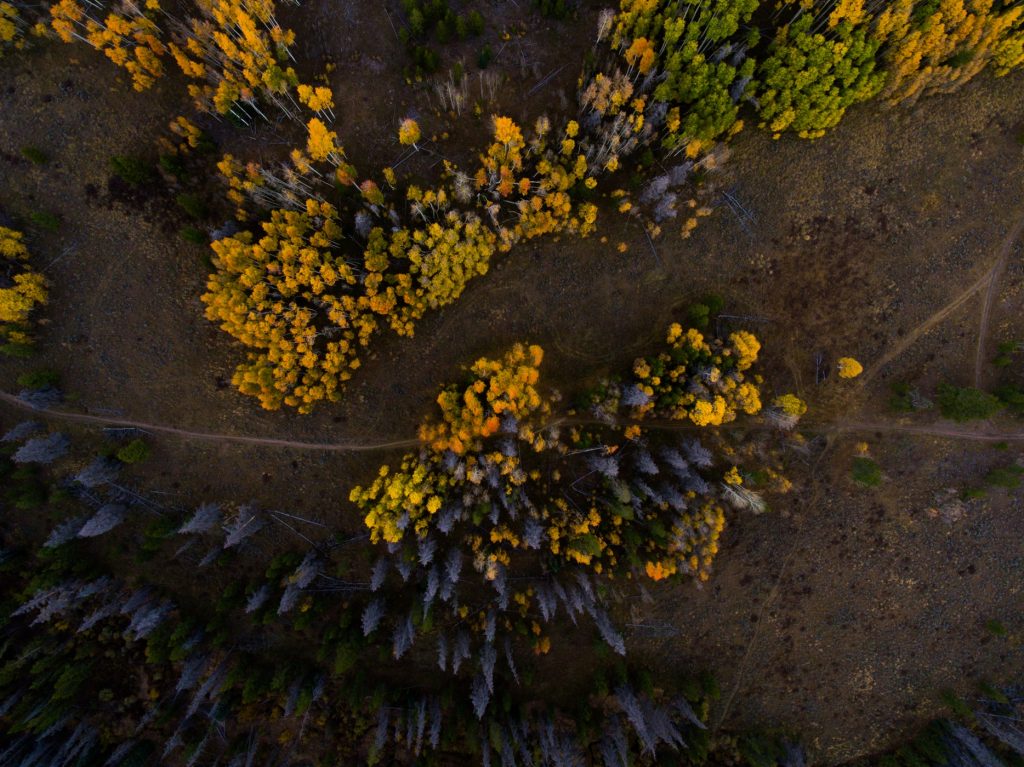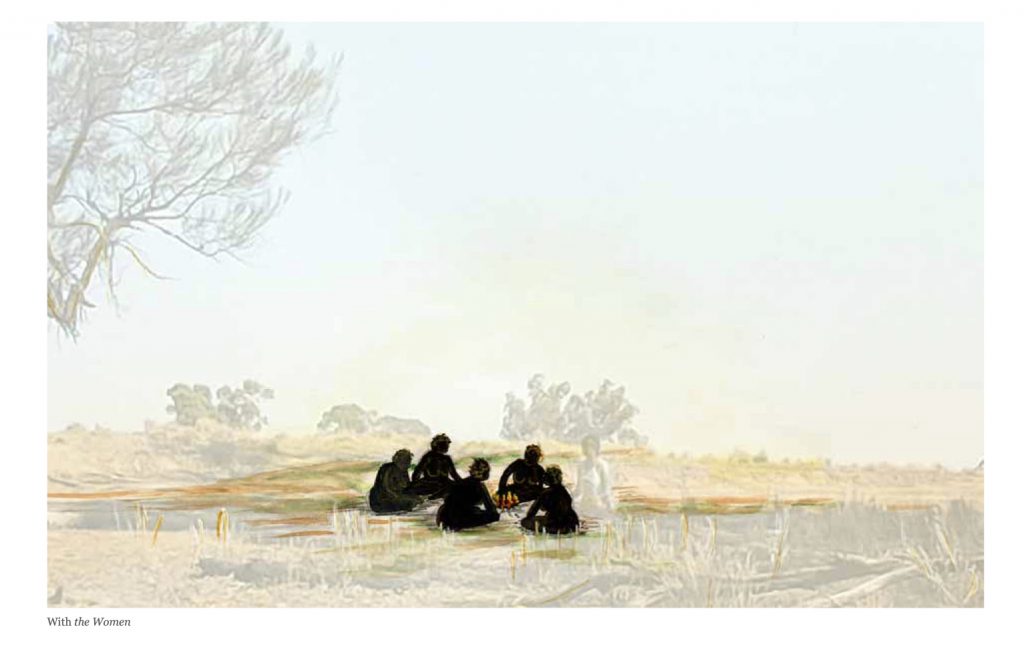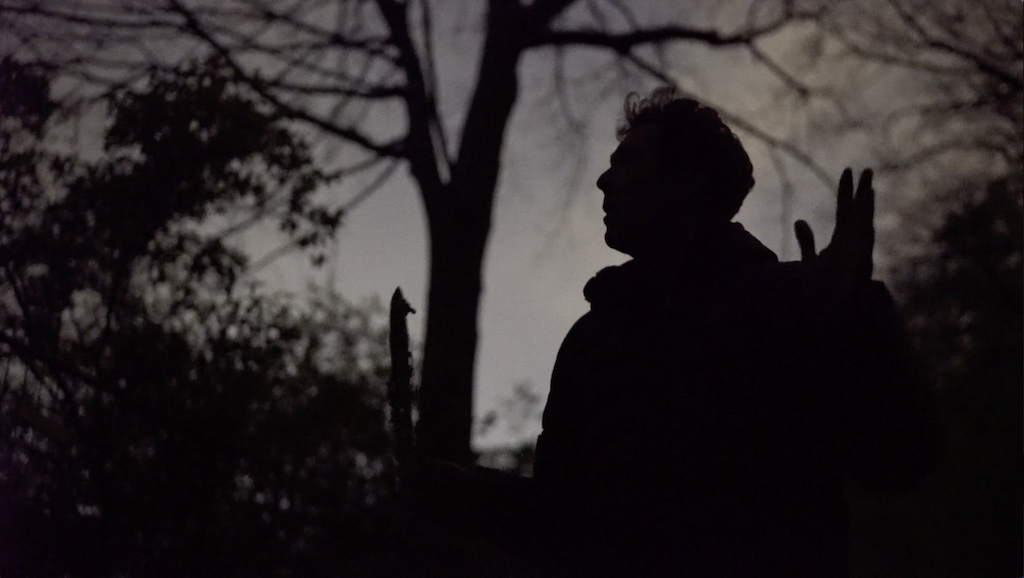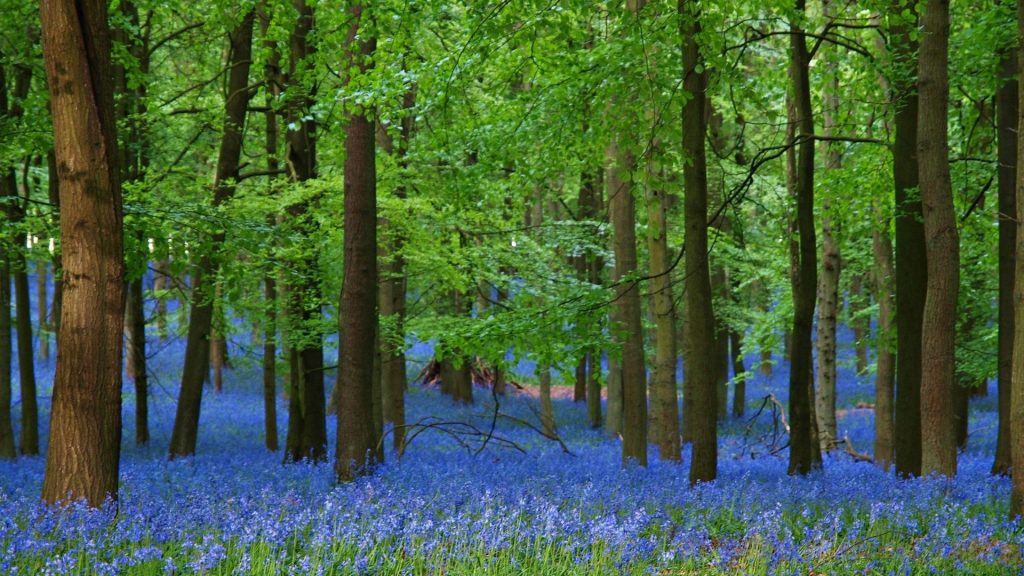The Juniper Tree
We got out of the car at a bend in the road of the mountain the Dineh (Navajo) call TsoodziŁ, Blue Bead or Turquoise Mountain, the sacred mountain of the south. We were two Anglos from New York, photographer Karen Marshall and I, and for a few years each of us had been covering a federal law that was displacing thousands of the most traditional indigenous people in the land now called Arizona. This was the first time Karen and I had worked together, and we were collaborating on a feature story. For a few days we had been interviewing people in their hogans and in a café in Window Rock and had received permission from Dineh friends to drive up the mountain and take photos. As soon as we stopped, Karen started gathering her equipment.
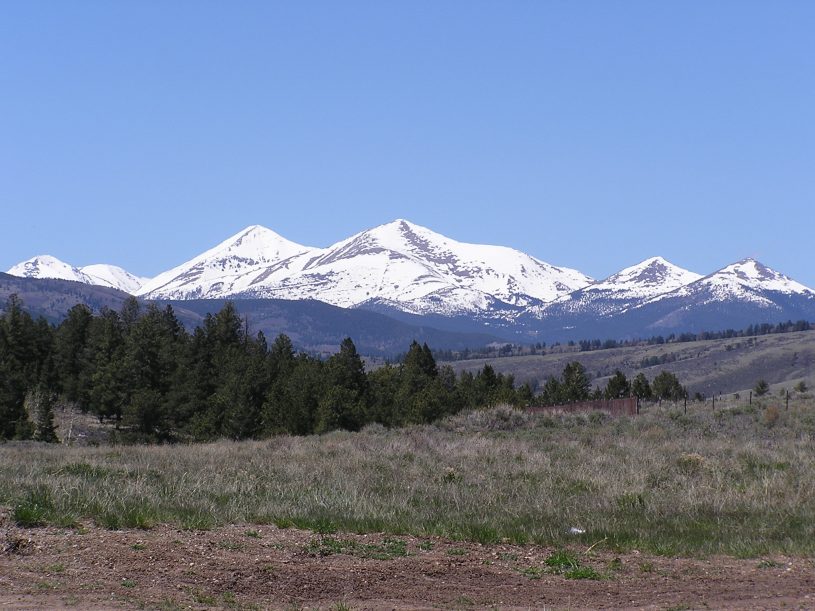
Oddly, I felt another pull. “I think I’m going to walk back that way,” I told her, indicating the empty road we’d driven down.
I walked, not with purpose, but not aimlessly either. I walked as if my feet were remembering something my brain had long forgotten or as if a tune were playing to a part of my body in frequencies too low for my ears to hear. Just a few yards from the car I started climbing up a slope heavily forested in juniper and pinyon trees, the ones Dineh Roberta Blackgoat called “the two sisters,” since the juniper’s long tap root and the pinyon’s massive system of shallow roots enables them to live side by side without competing for water.
At one large juniper I stopped. I was close enough to the road that I could spot the car through the branches of the trees. Karen would have heard me if I’d called out to her. I stopped there, because it seemed that was what was expected of me. The tree was ancient. If three people had been able to crouch low enough under its low, out-flung branches, they would not have been able to clasp hands around the trunk. The bark was silver, shaggy, and soft to the touch. I had only been standing there for a moment when something started happening to my body. I felt love seeping up from the ground and into my feet and then slowly rising through my legs, torso, arms, neck, head. It wasn’t heat I felt, not tingling, certainly nothing I could have identified as a physical sensation. It was love, and it was coming not from me but toward me. There is no other way to say this: it was love, it was coming from a juniper tree, and it was filling me up. For a few seconds, probably less than a minute, my entire body bathed in it. Then, as slowly as it had arisen, it started emptying out and down, head to feet. And then it was gone.
Shaken with awe, I stayed with the tree for a few minutes more, holding my hands against its furry bark, moving my face against its lacy needles. I could not imagine any possible way to express my gratitude. Then I turned around and went down the hill.
Karen was crouched on the side of the road, photographing the valley below. She glanced at me. “Something happened to you up there,” she said. “I’m not going to ask what it was.”
Not only did I not tell Karen about it, I’ve told few others. Stories about events that lack logical explanations make a lot of people uncomfortable, and when I have dared to relate such things, the rationales or embarrassed silence that often follows makes me uncomfortable. Nevertheless, ever since I was a little girl, that’s the world I’ve wanted to get intimate with. There is an Inuit song that begins, “In the very earliest time, / when both people and animals lived on earth….All spoke the same language. / That was when words were like magic.”1
I longed to slip into that magical place where everything speaks the same language. I wanted to understand what the birds were saying, to know what it felt like to be the willow tree in my back yard, to grasp the society of the tiny lives that wriggled in a rain puddle. I didn’t want to find the Source so much as I wanted to lose the humanness that separated me from it. And occasionally that’s happened. For instance, I received love from a juniper tree.

Once, when I was picking my way down a rocky slope in the Sahara Desert of southern Algeria, a raven flew up from behind me, and for a few seconds I was lofted up into the bird’s point of view, not human anymore, without memory or even wonder, just a flying being who noted with interest the Tuareg guides in their bright cotton gandoras, making tea in the valley below. Once at a Shoshone ceremony I was so possessed by ecstasy that I started spinning and screeching all around the room.
Here’s what I’m sure of: each of those encounters really did happen. I know they happened not only because I experienced them once, but also because whenever I think of them awe sizzles through me. What I’m not sure about, what I ask myself over and over is: Who gets to have meetings with Mystery? Did I do something right and good to earn those experiences? Or were they due to some chemical phenomenon that catalyzed when two normally separate energies crossed and sparked? Was there a scientific reason for what happened or was it spiritual—and could it be both at once?
In his book, Beyond Words, Carl Safina recounts the story of a herder who was struck by the trunk of an aggressive African elephant matriarch. The blow so injured the man’s leg that he was unable to walk. The elephant, apparently realizing his plight, used her trunk to move him under the shade of a tree, then she stayed with him throughout the night, occasionally touching him with her trunk. Did the elephant feel responsible for the man’s condition? Did she regret her action? Had the herder done something to deserve the blow—or was he more deserving of the extraordinary caretaking he later received?
Stories like this, in which humans and animals share a moment of profound and ineffable connection, are becoming more than anecdotal as scientists investigate the inner lives of animals. For example, in an article about intuitive interspecies communication (IIC) for A Research Agenda for Animal Geographies, the authors describe their “methodological and political venture that…. challenges (and invites) researchers and learners of the method to understand and engage with animals as social peers, communicative partners and co-researchers.”2 One of the authors, Viktoria Hinz, intends to pursue this field so she can work with wildlife, rather than managing it, to learn from the animals themselves the best ways of protecting their habitats.
Both the stories and the research convince me that animals can communicate to humans their needs, their pasts, their displeasure, and their affection. But can we also share emotions with trees, rivers, or mountains? With her studies of the complex networks by which trees warn one another of disease and protect young saplings, Suzanne Simard has shown that a forest is as abuzz with shared requests and responses as an old office switchboard. That chemistry in fungi and roots catalyzes the interactions among plants has gained widespread acceptance, even among former skeptics, though many still sneer at the belief, common among plant lovers, that houseplants thrive best when they’re treated to classical music and loving attention. Masaru Enomoto believed that water has similar reactions to kindly offerings. In a series of famous, critically challenged, experiments, he photographed droplets of polluted water under a microscope, then focused words like “love” and “peace” on droplets from the same source before photographing them. The water in the “before” pictures look like lumpen blobs; the “after” water drops are intricate, beautiful crystals.
Even rock speaks to and quivers with its environment. In 2018 scientists attached seismic recording equipment to Castleton Tower, a stately formation of redrock presiding over the Utah desert. The rock, they discovered, hums in a low and varying tone that sounds like a cross between a whale’s song and the drone of a jetliner. Every now and then the tone skips or wavers, as if something has happened to it. And, yes, something has happened. Castleton Tower, which vibrates at about the same frequency as a human heartbeat, is responding to wind, distant tremors in the earth, heat and cold, and passing cars. “We like to think of it as a voice,” said Dr. Jeff Moore, one of the geologists who is monitoring that and other rock formations. “It’s sort of alive with this vibrational energy.”3
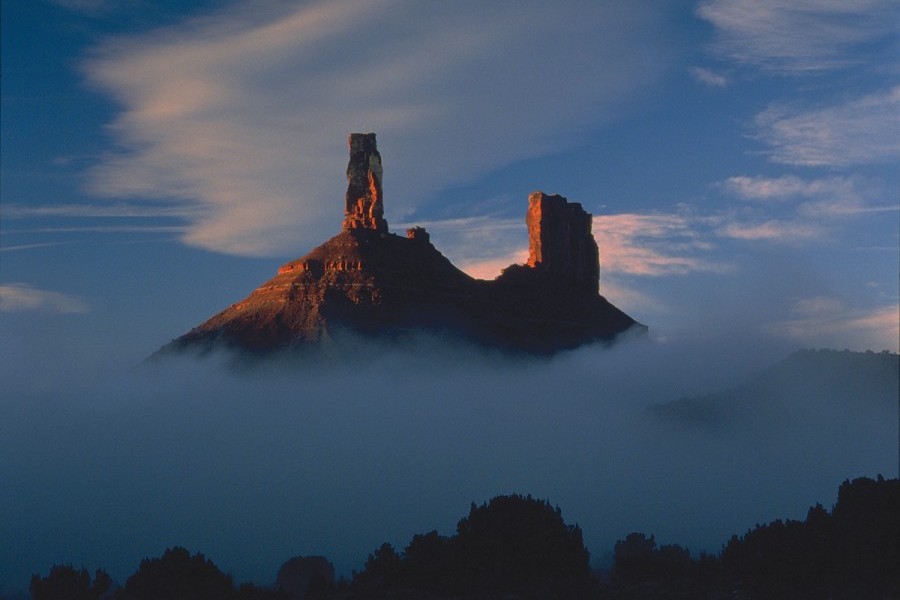
I feel comforted and encouraged when I read that there is scientific proof that trees help one another, that rocks note the motorized traffic of humans, and elephants feel something like regret. These studies affirm that the whole Earth is alive, and each entity in its own way is intelligent and reactive to its environment. Science can now explain the reasons for things like volcanoes and eclipses that our ancestors considered manifestations of the pleasure or displeasure of the gods. Knowing the science behind cosmic phenomena doesn’t make them less wondrous, it only opens the possibility of more wonders. It also unites the realms of spirituality and science, all too often presumed to be in conflict. One day, perhaps, Emoto’s theories will be vindicated by science, just as Gallileo’s were. For now, we can still ponder: Can a tree give love? Can a human being really be snatched up into the consciousness of a raven? Does everything, including rocks, have a soul?
Once I read an article in Parabola Magazine by a doctor, Christian Wertenbaker, who was trying to figure out the composition of the soul. In order to be compatible with a scientific worldview, he wrote, the soul must be assumed to have certain properties, such as being able to maintain its integrity for a long time, “perhaps forever”, and possessing a consciousness of the world and the ability to act on it. The soul, he proposed, might be made of plasma.4 To many the idea would sound extraordinary. Maybe one day we’ll find out he was right. Would that knowledge make the soul, whether you view it as the force that reincarnates after death, joins God in heaven, or guides us to our highest purpose in life, any less marvelous? Would receiving love from a tree or flying with a raven be less extraordinary if I were to learn that those beings and I were on the same vibrational frequencies? I don’t think so. I think I would be more, rather than less, affirmed in my belief in the spiritual maxim that all things in the universe belong to the same family, that, really, we do speak the same magic language. And if I were to learn that these mysteries landed in me solely because I was somehow spiritually worthy, I would try to develop the appropriate actions with which to respond. In either case I would be, and am, profoundly grateful.
References
1. Inuit, “Magic Words (after Nalungiaq),” Shaking the Pumpkin: Traditional Poetry of the Indian North Americans, ed. Jerome Rothenberg (New York: Alfred van der Marck Editions, 1986), 41.
2. M.J. Barrett, Viktoria Hinz, Vanessa Wijngaarden, and Marie Lovrod, “Speaking with other animals through intuitive interspecies communication: towards cognitive and interspecies justice,” A Research Agenda for Animals Geographies,Elgaronline, January 2021, https://www.elgaronline.com/view/edcoll/9781788979986/9781788979986.00018.xml
3. JoAnna Klein, “Taking the Pulse of a Sandstone Tower in Utah,” The New York Times online, September 9, 2019, https://www.nytimes.com/2019/09/09/science/castleton-tower-utah-vibration.html.
4. Christian Wertenbaker, “The Materiality of the Soul,” Parabola, Vol. 37, No. 4, Winter 2012-13, 79.



